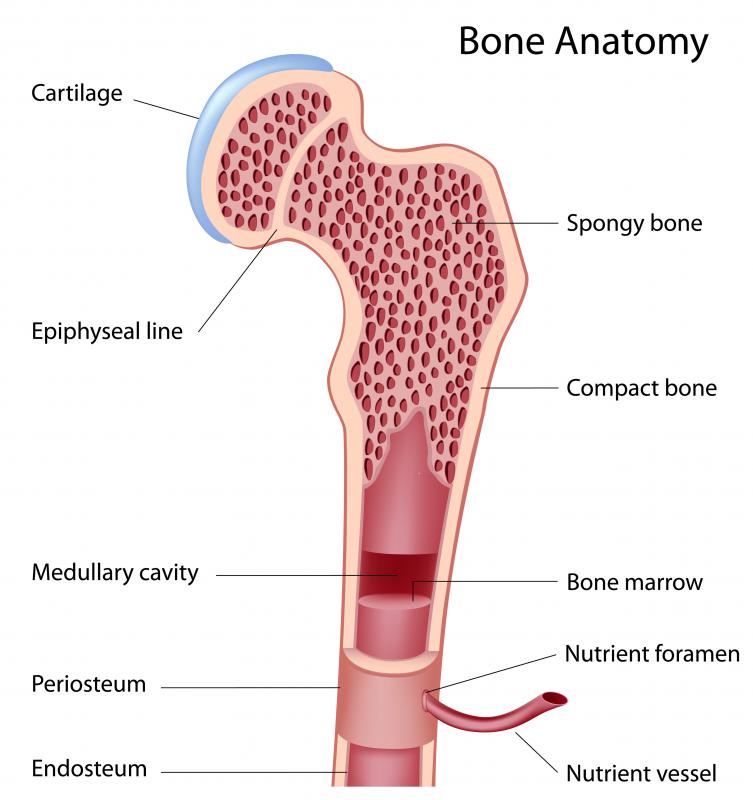At WiseGEEK, we're committed to delivering accurate, trustworthy information. Our expert-authored content is rigorously fact-checked and sourced from credible authorities. Discover how we uphold the highest standards in providing you with reliable knowledge.
What is Bone Marrow Aspiration?
A bone marrow aspiration is a procedure that is carried out as part of a bone marrow examination. Its purpose is usually to determine if the patient has any infections or cancers that may or may not be related to other medical conditions he or she may be suffering from. The procedure may be carried out in a hospital, clinic, or doctor’s office. In the latter case, the doctor is most likely to be a hematologist or oncologist. A nurse or a specialized technician might also carry out the procedure.
The procedure involves inserting a needle into the pelvic bone, or a bone in the sternum or lower leg area. The patient usually suffers some pain and discomfort, but it can be controlled by the use of either a local anesthesia or intravenous sedation. The needle sucks out some of the marrow. Afterward, a lab technician will analyze the aspirated bone marrow to determine if there is any abnormality that might point to cancer or an infection. Some conditions for which a bone marrow aspiration and biopsy would be indicated are anemia, lymphomas, HIV, leukemia, and multiple myeloma.

A bone marrow aspiration is very similar to a bone marrow biopsy. In the case of an aspiration, the liquid portion of the marrow is sampled; in a biopsy, a sample of the more solid part of the marrow is removed. The two tests provide different, but related, information. Frequently, a bone marrow aspiration and biopsy are done at the same time.
The bone marrow aspiration procedure can sometimes result in some fairly uncomfortable after effects. Any pain or discomfort that was triggered by the procedure may take a long time to subside, or may become worse. Swelling and drainage may occur at or around the site where the needle was inserted.

The patient may experience an adverse reaction to intravenous sedation or anesthesia, such as nausea. Infection and excessive bleeding can also occur when the patient has a compromised immune system, has a low platelet count, or is taking aspirin or some other anti-coagulant at the time of the procedure. In some procedures, a doctor will decide against bone marrow aspiration and biopsy when the prospective patient has a blood-clotting disorder or is a hemophiliac.
AS FEATURED ON:
AS FEATURED ON:












Discuss this Article
Post your comments